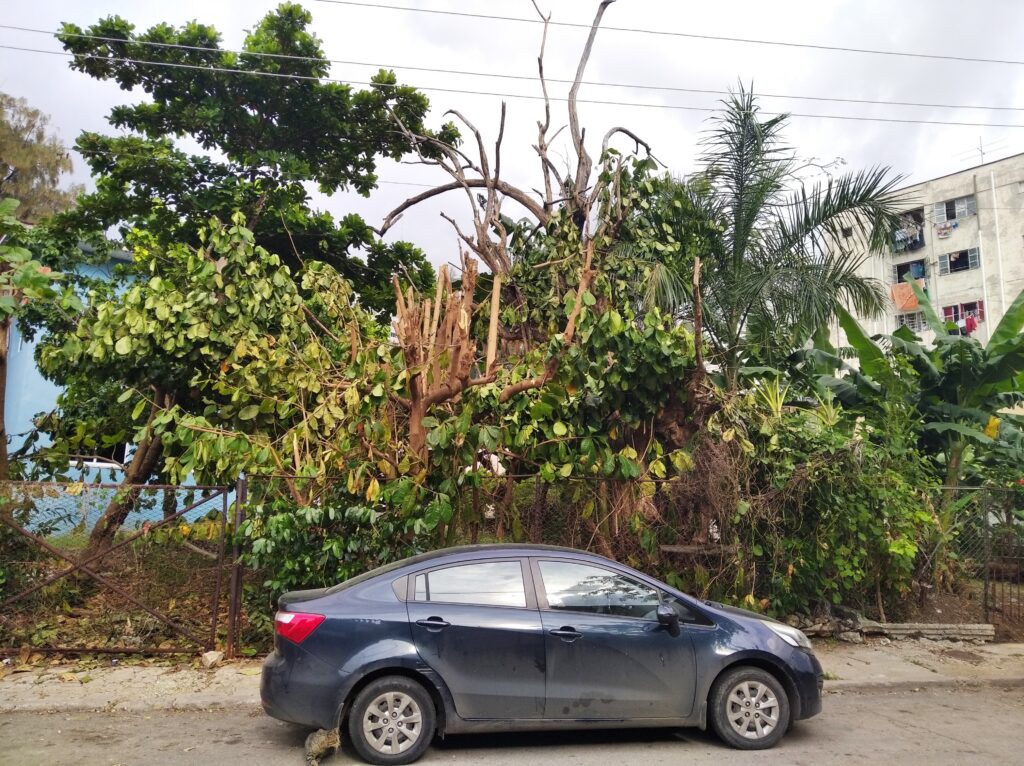It was a sunny day of spring when all the trees from a downtown park in Havana were being cut. All that was left around were just broken branches and scattered leaves. The scene happened in May, 2019, but it’s frequently repeated in cities along the country.
Soon afterward, biologist Alejandro Palmarola, president of the Cuban Botanical Society, harshly criticized this measure and many people showed their upset via social media. These plants were ocujes, a native species that doesn’t damage sidewalks nor power lines, highlighted the scientist, who’s also president of the Latin American Botanical Association.
Two days later, Luis Carlos Góngora, vicepresident of the Havana’s government, replied on a Facebook post that the felling was rushed and irresponsible, and those in charge were given a fine. Also, as part of some repair works, the park would have twice the trees it had.
Far from being a random episode, this story gives an idea of the tricky situation of urban forests in the country and some places in the region.
A leafy issue

Currently, communal, green areas show problems that worsen day after day, said architect Larisa Castillo, director of Horticulture and Landscape Gardening at the National Botanical Garden. In more than 80 % of Cuban streets the placement and selection of species is unsuitable, which implies conflicts with pavement, buildings and service networks (telephonic, electrics, hydraulics).
Moreover, there’s no unique authority taking care of urban greens. Rather, many organizations take part in this task. The Tropical Geography Institute, the State Forest Service, electrical and telecommunications companies… Since so many hands are involved, it’s easy that their actions turn to be contradictory.
And the list goes on. Maintenance on trees is conducted by employees which are not necessarily trained, mainly when it is urgent due to upcoming meteorological phenomena. This means results are often traumatic and lacking scientific and technical rigor, Castillo explained.
In fact, reports and complaints of negligent pruning are traceable in the media since at least 10 years ago. To make matters worse, frequent storms and hurricanes cause great damage in foliage, which is not easy to recover.
According to the expert, people’s dearth of green culture has a bearing on numerous deeds of vandalism. This is not exclusive from Cuba: in Bogota, Colombia, trees’ mortality rate due to human actions peaks 40 %, while natural causes provoke 10 % of deaths.
Likewise, Santo Domingo shows a deficit of green public spaces. While the World Health Organization (WHO) recommends having 10 to 12 square meters of green area per person, the capital of Dominican Republic has about 4 to 5 square meters. Indeed, the most densely populated neighborhoods own less trees.
The greener the better

Like other big cities in the Caribbean and Latin America, Havana faces air pollution, high temperatures, even heat islands, as wells as residents suffering respiratory diseases. In that scenario, urban greens look like an if-and-only-if solution. And that is because the environmental services provided by trees are pretty evident.
They absorb carbon dioxide and pollutant particles from the air, contribute to decrease temperature, reduce noise and regulate the water cycle. Trees are biodiversity shelters, provide shade and make each corner a more pleasant place.
According to The State of the World’s Forests 2020, published by the UN Food and Agriculture Organization (FAO), “there is growing evidence that exposure to natural environments has positive impacts on human physical and mental health across all socio-economic strata and genders, particularly in urban areas and particularly for socio-economically disadvantaged urban populations”.
Five centuries of transformations have made Havana –and Caribbean cities in general– less resilient when it comes to riding out any disruption, like electric storms and hurricanes, argues biologist Diana Rodríguez Cala, master in Ecology and Conservation from the University of Aberdeen, Scotland.
In her opinion, it’s important not only to plant or preserve trees, but to recover the soil. That would help, for instance, to absorb rainwater and prevent floods. Also, bushes and other plants must be taken into account as part of the city ecosystems.
From now on

“We must act with the same urgency and resolve to transform cities and address the climate and pollution crises. Now is the time to rethink and reshape the urban world”, remarked UN Secretary-General Antonio Guterres, referring to the opportunity to rebuild after the Covid-19 pandemic. Again, green coverage appears on the intersection between people’s health and climate change, and they turn out to be an economic, simple alternative for several problems.
Following that premise, the Tree Cities of the World program has recognized the commitment “to ensuring that urban forests and trees are properly maintained, sustainably managed, and duly celebrated”. Among the first 68 acknowledged cities, there are 8 from Latin America.
Architect Larisa Castillo pointed out that common citizens’ engagement is crucial: when people feel responsible for trees, they are likely to anticipate conflicts of interests and boost local reforestation initiatives.
Inventorying plants individuals, revitalizing saplings’ production and campaigning for green urban spaces should also rank higher on local agendas. For the sake of the future, but chiefly for the present.